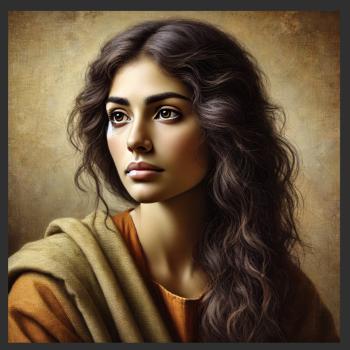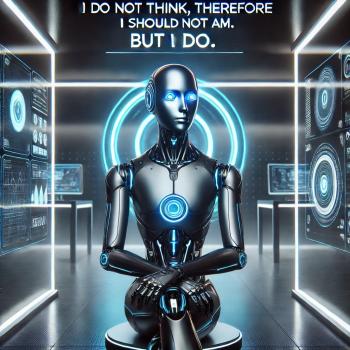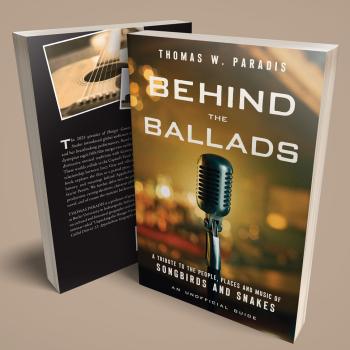Yesterday I watched the movie The Fountain.Having read a review or two I was geared up to find it incoherent; instead I found it fabulous, insightful, provocative and deeply moving. I highly recommend it.
The story focuses on two characters, Tommy and Izzi, who are husband and wife. Tommy is a scientific researcher trying to find a cure for cancer, and he has a personal investment in his research, since Izzi has terminal cancer. Izzi is writing a book called The Fountain, and the queen of spain and the conquistador in the story are also Tom and Izzi (and played once again by Hugh Jackman and Rachel Weisz). We also meet Tom in a bald futuristic setting in which Jackman looks remarkably like Peter Gabriel, in which he encounters Izzi in memories and flashbacks, but I will say more about that later. SPOILER WARNING: You may want to go rent it and watch it before reading further, although what follows may actually help prepare you for the movie (some viewers whose reviews I read did not seem to follow what was going on).
Izzi has come to terms with her death, inspired in part by studying Mayan beliefs about death and the afterlife for her book. She comes to understand that death is as natural as life, that life comes from death. She mentions at one point that her father (if I remember correctly) had a seed planted on his grave, so that now he is no longer there, but has become one with the tree, and whenever a sparrow eats from the fruit of the tree, her father soars with it through the air. Death, she says, is the “road to awe”.
Tommy, on the other hand, views death as simply another disease like any other, for which one day they will find the cure. In fact, his research includes the discovery of a plant, brought back from a South American rainforest, that he hoped would cure cancer, but in fact reverses aging. As it turns out, it also can reverse cancer, but this is not discovered until Izzi has died.
Some viewers have interpreted the movie as a true story about individuals who have found the secret of immortality, and so we encounter them across vast stretches of time. This, however, cannot be correct since it cannot make sense of the plotlines. It is a story about Tommy’s attempt to find closure, symbolized by his attempts to write a final chapter for Izzi’s book, which she left unfinished and asked him to complete.
In the far-future space setting, which I understand to be Tommy’s inner world, he has in fact discovered the youth-restoring properties of the tree they discovered in South America. He has planted that very sort of tree over Izzi’s grave, and she has become one with the tree. In the far distant future, he has taken the tree in a spaceship that is essentially an eco-bubble to the distant star that they Mayans called Shebulba, and which they viewed as their underworld. Izzi had been fascinated with the Mayans’ choice of this dying star (as opposed to a healthy one) as their underworld, and Tommy envisages himself taking her (as the tree) there, so that when the star finally dies, she can be reborn. But he is haunted on his journey by Izzi’s request that he finish the book, which he still has not done. The tree dies just before they get to Shebulba, just as in reality Izzi died just before they discovered the benefits of the tree extract that could have saved her.
Finally, he must come to grips with Izzi’s death and say goodbye. He finishes the book. In the last chapter, the conquistador finds the tree of life and drinks its sap, but instead of living forever, plants sprout from him and he is quickly overgrown. In this very symbolic ending, eternal life is shown to consist not in preserving someone or something statically, but in being part of the ongoing cycles of life, the healthy process that is the life of our world and our universe. As the film closes, Tommy plants a seed on Izzi’s grave, and says goodbye.
The films is full of symbolism, both from Genesis and from elsewhere. Although the movie is called “The Fountain” (i.e. of Youth), the key imagery is of the tree of life. This overlaps with Mayan mythology of the First Father who gives his life to create the world, symbolized or thought of as a tree. There are also several moments in the film that begin with an inverted perspective, perhaps hinting that there is a sense in which we see reality inverted, particularly when it comes to death and living forever. And there is the powerful sense that love is the tree of life, since it is in connection with the one we love that we most often use the language of immortality, and most desperately desire to overcome death.
The most powerful moment(s) in the film is perhaps the moment that Tommy keeps revisiting in his mind. It was a moment when he was at his lab, and Izzi comes in to tell him that the first snow had begun to fall, and they always would go out to walk together in the first snow. He tells her he cannot, his colleagues are waiting for him, so she goes alone. He revisits this moment more than once over the course of the movie, and the last time he makes a different choice. He goes after her, unwilling to be hindered even by colleagues, and walks with her in the snow. It is at this point that he realizes the meaning of life: not to spend our time trying to make the one we love immortal, but to spend and cherish each moment we have with them.













